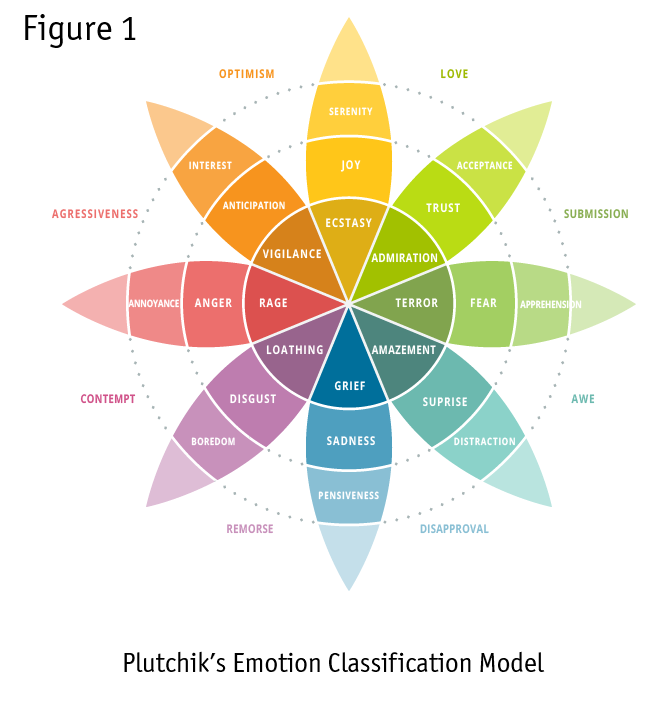Editor’s note: Ryan Baum is senior research strategist at market research technology company FocusVision, New York City.
Brand and marketing researchers are very fond of attributes. They generally like to capture an array of them from consumer survey respondents in the form of statements. For example, a company might include a broad attributional statement such as, “It’s a brand that meets my needs” or a company that sells soda may include an industry-specific attributional statement like, “It’s a soda that tastes great.” These statements are then analyzed to gauge what factors specifically correlate to higher sales.
There’s no doubt that understanding how attributional statements correlate with sales is extremely useful to companies looking to sell more goods and services. However, while companies have capitalized on these learnings, some have long ignored another important element: an understanding of the deep emotional connections consumers have with goods and services.
Scientific study of emotions
Emotions have been studied scientifically for years, dating back to Charles Darwin. He argued that emotional expressions evolved through natural selection, thus are universally recognizable, regardless of culture or language. This led the way for further scientific study of emotions and their classification. Pioneered by psychologist Paul Ekman, emotional classification is the process of systematically distinguishing emotions from one another. Ekman led a series of studies which guided him to six emotions that are universally recognizable across cultures: anger, disgust, fear, happiness, sadness and surprise. While largely agreeing with Ekman’s findings, Robert Plutchik, another pioneer in the field, coined an emotion classification model of his own, which included all six of Ekman’s emotions accompanied by two additional ones: anticipation and trust.

Classifying emotions
A simple explanation of emotion classification is found in likening emotions with colors. By mixing together the primary colors, you create an infinite number of secondary colors. This same concept can be applied to emotions. When mixing basic emotions to various degrees, we form secondary emotions. Moreover, basic emotions can be felt at differing intensities. As we can see from Figure 1, the least intense form of fear could be described as apprehension but in its extreme form fear becomes terror.
Emotion has an additional dimension that color cannot provide. This is what psychologists refer to as valence – categorizing emotional experiences as positive or negative. Accordingly, emotions such as joy and trust have positive valence, while the emotions anger, disgust, fear and sadness have negative valence. Furthermore, it’s possible that consumers might feel no emotional connection at all with something.
Measuring emotion in political research
Let’s look at Plutchik’s model and apply it to an extreme emotional situation: this year’s presidential election. My team sought to identify the basic emotions people were feeling about Hillary Clinton and Donald Trump, as well as the intensity with which those emotions were being experienced. We wanted to measure the overall emotional valence and to understand why people were feeling specific emotions about Clinton and Trump.
FocusVision and ProdegeMR worked together to interview an online sample of 2,000 individuals representing a cross-section of the U.S. population. The study allowed likely and unlikely voters to participate because the purpose of the research was to acquire an understanding of how all people felt emotionally about the candidates, not to try and predict the outcome of the election. To qualify for the study, all participants must have “seen or heard many things” about both Clinton and Trump and be at least 18 years old.
We began by exploring overall trends on a total population level. We found that people felt emotionally negative about both candidates, though more so about Trump (68 percent) than Clinton (51 percent). We also found that Trump dominated the emotion of surprise across every demographic – an emotion that can have a positive or a negative valence depending on the context. When contrasting how Democrats and Republicans felt emotionally about their own party’s nominee, Democrats felt more positive about Clinton (71 percent) than Republicans felt positive about Trump (60 percent).
In investigating how people of various races and ethnicities felt emotionally about the candidates, the study found that people of all ethnicities felt negative emotionally about Trump. In contrast, with the exception of whites, people of all ethnicities felt positive emotionally about Clinton. Clinton was viewed most positively among African-Americans.
Getting to the why
To get at the why, we took the eight basic emotions and asked respondents open-end questions about why they felt joy, trust, surprise, anticipation, disgust, anger, fear and sadness toward the candidates. For example, if a respondent felt a high level of surprise toward Trump, we asked them, “Why does Donald Trump make you feel surprise?” Trump evokes surprise primarily due to the outlandish comments he so frequently makes. People who felt positively about Trump viewed him as outspoken. They liked that he’s a successful businessman and believed that he has good intentions for America. People who felt negatively about Trump viewed him as offensive and saw him as bigoted, ignorant, egotistical, dishonest and hateful. The only segment of our data set that had an overall positive emotional view of Trump was made up of people who identified as Republicans.
People who felt positive emotions toward Clinton perceived her as a qualified leader with ample political experience and good intentions. They were also overwhelmingly positive about the potential of Clinton becoming the first female president. Those who felt negatively about Clinton viewed her as distrustful, representing a major theme across all negative emotions. Furthermore, the study showed that some people believe she is privileged, and has not been held accountable for what they see as poor past decisions. Another broad reason for negative emotions toward Clinton is due to her pro-choice position on abortion.
Applying the learnings
Integrating emotional measures with traditional marketing research is powerful as it deepens learning and provides an understanding of the why behind the what. Here are five tips on how to apply this type of emotional research to commercial research.
- Integrate emotions with custom surveys or as add-ons to trackers: Custom surveys are a great way to integrate emotional measures. For example, if a company wants to know how consumers feel about their brand, they can ask, “To what extent does this brand make you feel joy?” To get a read on the intensity of the emotion felt, a company might use a scale such as, “Not at all, to a small extent, to a medium extent or to a large extent.”
Tracking emotions can also be added to existing research as part of a tracker. By adding this element, companies will understand the intensity of emotions being felt toward a brand or product and why people are experiencing various emotions. This will provide insights and direction for companies looking to form positive emotional relationships with consumers.
- Continuous monitoring: It’s best if emotions are measured and tracked over time. Consumers’ attitudes toward brands, products and services are always changing. For instance, even if a product remains unchanged, industries or environments are in constant motion, which may cause consumers to feel differently about an unchanged product. When enough emotional measurements are taken over time, companies can understand how consumer emotions are changing with regard to their brands, products and services. Companies will then be able to compare emotional scores with sales numbers and understand which emotions correlate closest to higher sales.
- Use the power of written and verbal language: Researchers are able to pull insights from both written and verbal language. But what about the popularity of using images or emojis instead of words? The political research and emotion study used words because we felt that it would leave less room for confusion. Using emojis would not have allowed us to measure the full range of emotions, such as trust or anticipation. I am fully aware that there are other quantitative solutions, similar to the one employed in this study, that measure emotions using faces or emojis instead of words. However, I have found that research contrasting the use of faces to words reveals no noticeable differences in the data.
- Implicit research will reveal more in emotional testing: Another way to gauge emotion is through implicit association, which measures a survey respondent’s reaction time when answering a question. Response times are measured in milliseconds, and a quicker response time will usually equal a higher emotional intensity. If a respondent is not feeling an emotion, or is not sure if they are feeling an emotion, they will need to slow down and think about it. The highest and best use of implicit association occurs when respondents are unable or unwilling to communicate how they feel.
- Gather information independently: Previous studies suggest that it’s best to gather information from people independently and pool the data together rather than interview people while in the company of others. This is true for a number of reasons such as feeling pressure to conform, censoring out of fear of social disapproval, waiting for others to lead, etc. By asking open-end questions in a solitary setting, respondents are placed in an environment where they can answer truthfully, without distractions from others.
It’s only a matter of time before emotional measurement reaches mainstream political research. But it’s not all about politics – in the commercial world, if researchers can standardize quantitative emotional measurements, both companies and consumers stand to benefit. Brands will know how and when to make more of whatever it is that makes consumers happy, and consumer satisfaction will potentially soar to new heights.
